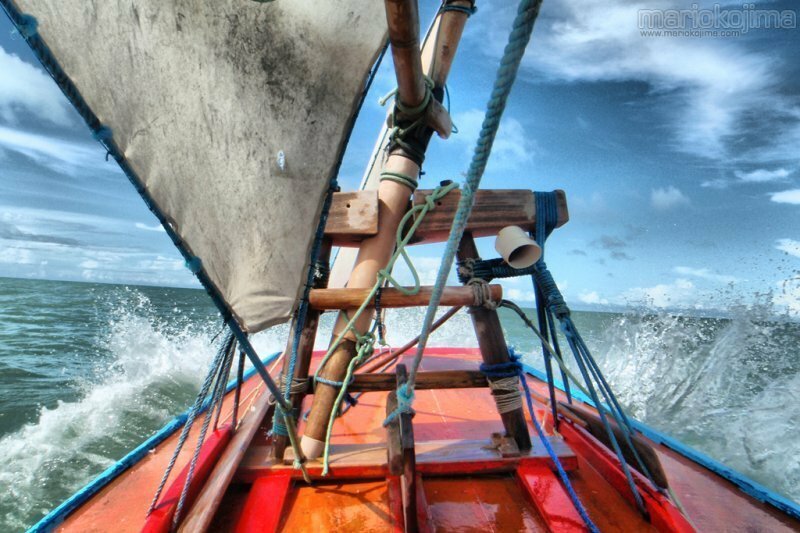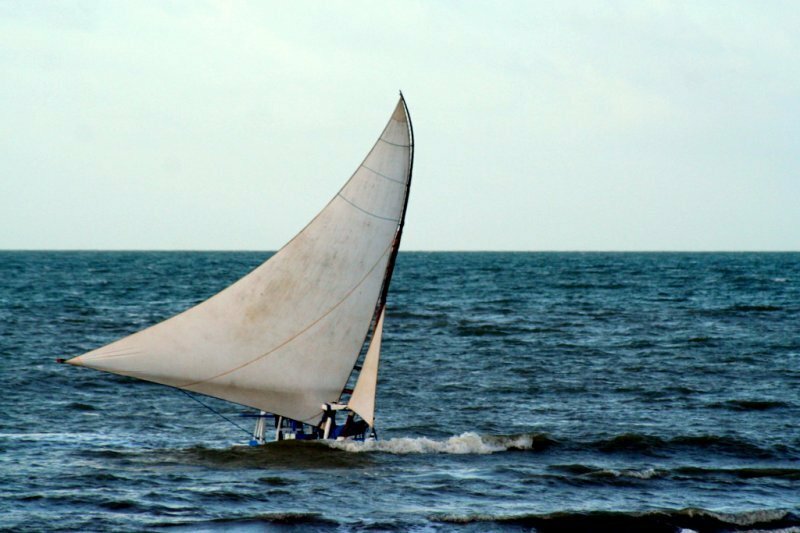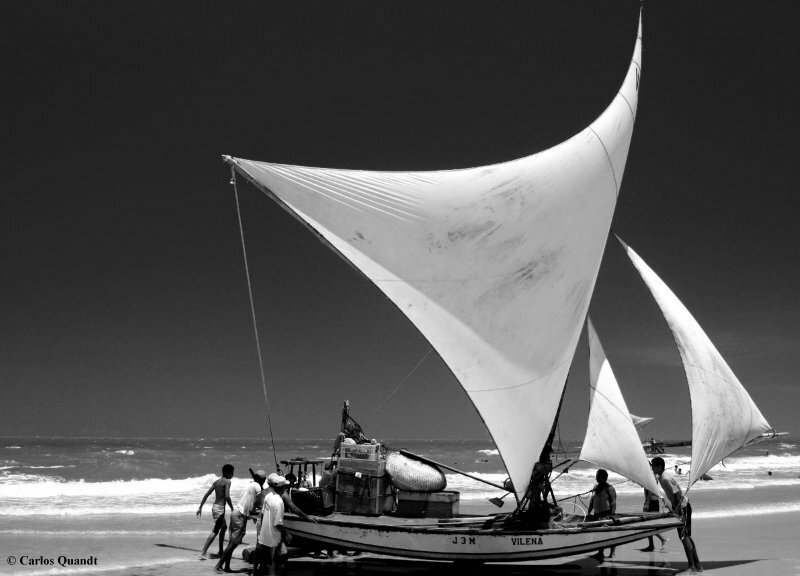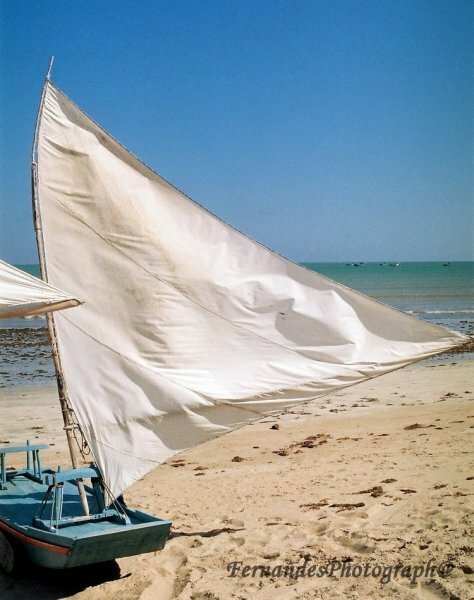History
The first European to come across a jangada was the Portugese explorer Pero Vaz de Caminha. He mentioned them in a letter dated 1st of May 1500 and probably saw them along the coast of what is now the Brazilian state of Bahia, far away from the place where you can find the jangadas these days. However, this was not the same jangada as we know them today.
These early jangadas did not have a sail. De Caminha called them ,Almadia´, and the locals referred to their raft as ,Piperis´. These vessels only had a slight resemblance to the jangadas we know.
The word ,jangada did not exist at that time and the only resemblance with the current day jangada was that they were made from logs tied together. The exact way the transition came about to the current day jangada with a sail is unknown. Sails were used by several tribes from the Caribbean and this knowledge arrived somehow in Brazil in the course of the sixteenth century.
What is known, is that the Portugese, the most entrepreneurial nation of the world at the time, brought influences to Brazil from parts of India and Mozambique. There might be therefore, some Indian or African influences in the jangada.
One possibility is that Brazilian crew who worked on board Portugese ships were pivotal in the final appearance of the jangada along the Brazilian coast. An indication for this is the origin of the word ,jangada´ which according to linguistics originates from the word ´changgadam ´, which is Malagasy for raft.
This word again is connected to the holy language of India, the country where the Portugese had several colonies. The sanskrit word for raft is sãnggad, which has similarities with present day ´jangada´.
Mozambique, another Portugese colony, used to have ancient vessels similar to the jangada and this Mozambique link is another way the Portugese might have ended up with their jangadas. It took two centuries for this boat to be transformed from a raft into the elegant vessel we know today. From the beginning of the seventeenth century there are reports of jangada´s with a sail.
The jangada seems during that time to be prevalent along the entire Brazilian coast. However, in the course of the seventeenth century the Portugese, as part of a campaign to eliminate gold smuggling, made a systematic effort to eliminate all vessels they did not control.
The jangadas were destroyed along many stretches of coast. Only in the remote and wild northeastern coast of Brazil, where the Portugese were hindered due to shallowness and the strong prevalent current originating from the northwest, the jangadeiros in this area managed to continue sailing their rafts.
The absence of harbours in this remote part of Brazil did not hinder the sailors of the jangada, since the vessel can be launched from beaches.

Jangada sail drying, Ceara State, 2007 © Fernandez Photograph




